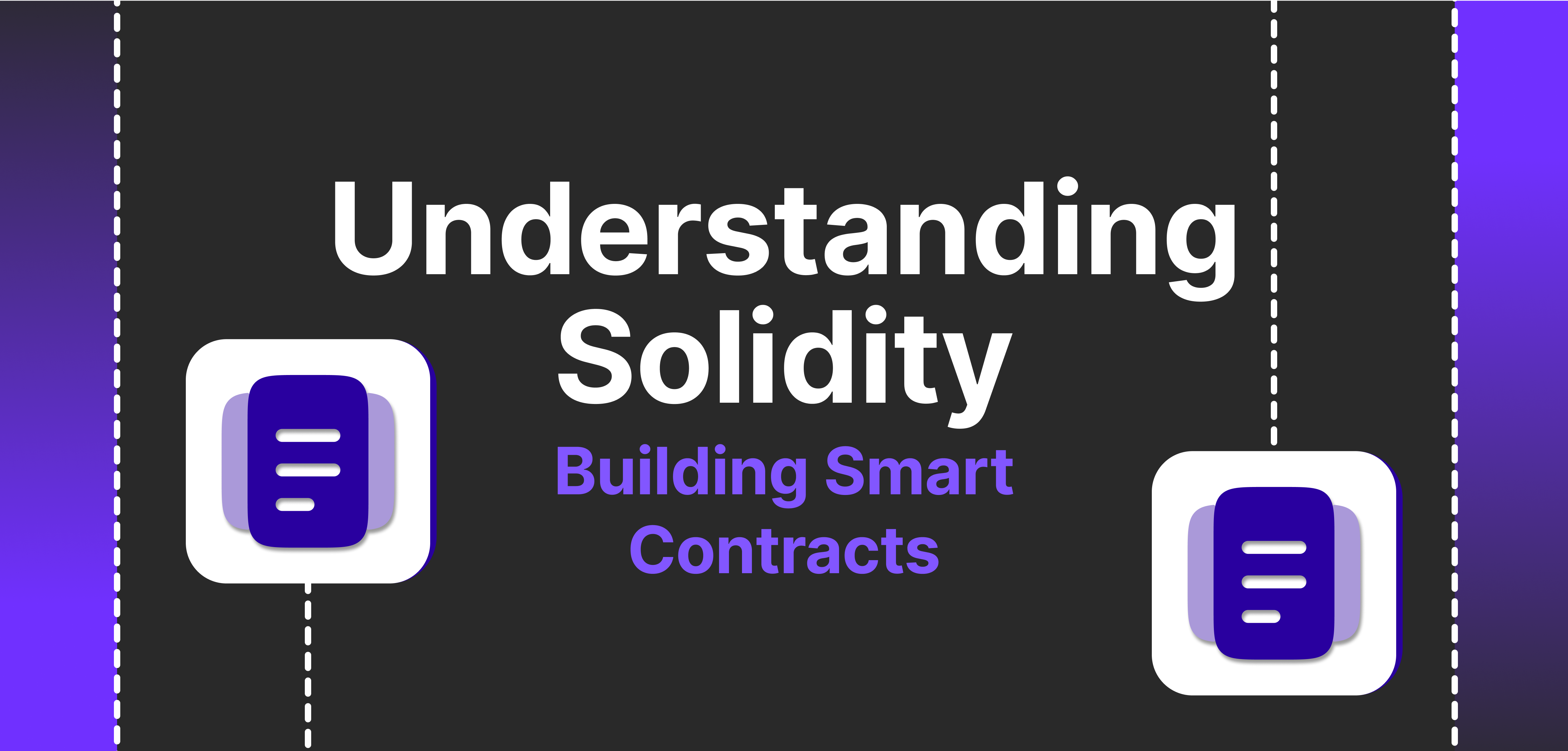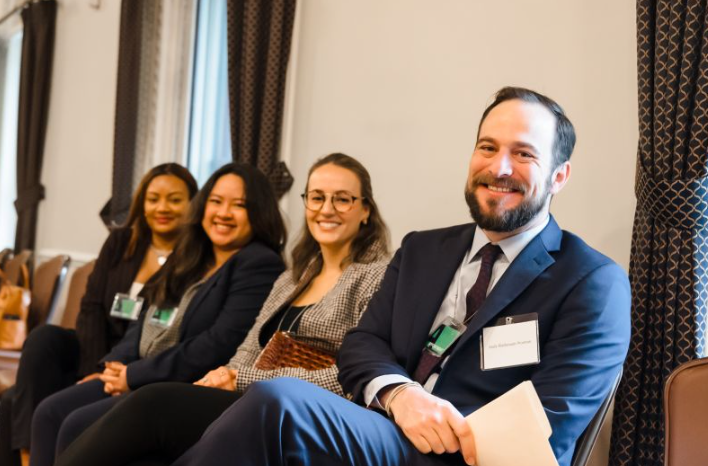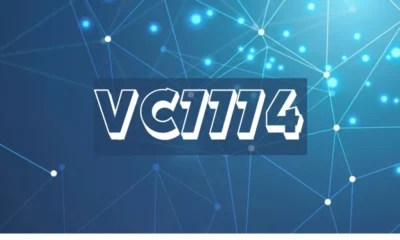News
EL OPEÑO: UNVEILING THE ANCIENT MYSTERIES OF MICHOACÁN

Introduction to El Opeño
El Opeño stands as a testament to the rich cultural heritage of Michoacán, Mexico. Nestled amidst the rugged terrain of western Mexico, El Opeño remains shrouded in mystery, captivating archaeologists and historians alike.
Historical Background
Discovery and Excavation
El Opeño first came to light in 1936 when American archaeologist William Niven began excavations in the region. Over the years, meticulous excavations have unearthed a treasure trove of artifacts, shedding light on the enigmatic civilization that once thrived here.
Importance in Mesoamerican Archaeology
The discovery of El Opeño has been hailed as a significant milestone in Mesoamerican archaeology, providing invaluable insights into the ancient civilizations that flourished in the region.
Location and Geography
Geographic Features
Situated in the heart of Michoacán, El Opeño enjoys a strategic location overlooking the picturesque landscape of the Balsas River Valley. Its elevated position offers commanding views of the surrounding terrain.
Significance of Location
The location of El Opeño played a crucial role in its development, facilitating trade and communication with neighboring settlements.
Architecture and Structures
Pyramids and Temples
The architectural marvels of El Opeño include towering pyramids and intricately designed temples, testifying to the advanced engineering skills of its builders.
Residential Areas
The residential areas of El Opeño offer glimpses into the daily lives of its inhabitants, with evidence of elaborate urban planning and sophisticated infrastructure.
Cultural Significance
Religious Practices
Religion held a central place in the lives of the people of El Opeño, as evidenced by the numerous religious structures and ceremonial artifacts uncovered at the site.
Artifacts and Their Interpretations
The artifacts discovered at El Opeño provide valuable clues about the cultural practices and beliefs of its ancient inhabitants, allowing archaeologists to reconstruct their way of life.
Social Organization
Elites and Commoners
The social hierarchy of El Opeño was marked by distinct class divisions, with elites enjoying privileged status and access to luxury goods.
Economy and Trade
The economy of El Opeño was driven by agriculture, trade, and craftsmanship, with evidence of long-distance trade networks linking it to distant regions.
Religious Beliefs
Gods and Deities
The religious pantheon of El Opeño was populated by a diverse array of gods and deities, each associated with specific aspects of nature and human experience.
Rituals and Ceremonies
Rituals and ceremonies played a central role in the religious life of El Opeño, serving as occasions for communal celebration and spiritual renewal.
Decline and Abandonment
Theories and Speculations
The decline and eventual abandonment of El Opeño remain shrouded in mystery, with scholars proposing various theories ranging from environmental factors to political upheaval.
Legacy of El Opeño
Despite its demise, the legacy of El Opeño lives on, serving as a reminder of the enduring power of human creativity and ingenuity.
Recent Discoveries
Ongoing Research and Findings
Recent excavations at El Opeño have yielded new insights into its history and culture, fueling ongoing debates among scholars.
Impact on Understanding Mesoamerican Civilization
The discoveries made at El Opeño have significantly enriched our understanding of Mesoamerican civilization, highlighting its complexity and diversity.
Tourism and Preservation Efforts
Visitor Information
Today, El Opeño welcomes visitors from around the world, offering guided tours and educational programs that showcase its rich cultural heritage.
Conservation Measures
Efforts are underway to preserve and protect the archaeological treasures of El Opeño for future generations, ensuring that its legacy endures for centuries to come.
Unsolved Mysteries
Enigmas and Riddles
Despite decades of research, many mysteries surrounding El Opeño remain unresolved, fueling speculation and intrigue among scholars and enthusiasts alike.
Speculations by Scholars
Scholars continue to debate the nature and significance of various aspects of El Opeño, offering competing interpretations and theories to explain its enigmatic past.
Comparison with Other Mesoamerican Sites
Similarities and Differences
Comparisons with other Mesoamerican sites reveal both similarities and differences, underscoring the rich tapestry of cultures that once flourished in the region.
Cross-cultural Influences
Evidence of cultural exchange and interaction between El Opeño and neighboring civilizations sheds light on the interconnected nature of Mesoamerican society.
Modern Relevance
Cultural Heritage
The cultural legacy of El Opeño continues to inspire artists, scholars, and cultural enthusiasts, fostering a deeper appreciation for the rich tapestry of Mesoamerican civilization.
Educational Significance
The study of El Opeño offers valuable lessons about the resilience of ancient societies and the importance of preserving our cultural heritage for future generations.
Conclusion
In conclusion, El Opeño stands as a testament to the ingenuity and creativity of the ancient inhabitants of Michoacán, Mexico. Through its monumental architecture, intricate artifacts, and rich cultural heritage, El Opeño offers a glimpse into a bygone era, inviting us to explore the mysteries of the past and celebrate the enduring legacy of Mesoamerican civilization.
Frequently Asked Questions (FAQs)
- What is El Opeño?
- El Opeño is an ancient archaeological site located in Michoacán, Mexico, known for its monumental architecture and rich cultural heritage.
- Who were the inhabitants of El Opeño?
- The inhabitants of El Opeño were part of a pre-Columbian civilization that flourished in the region during the Formative Period of Mesoamerican history.
- What is the significance of El Opeño in Mesoamerican archaeology?
- El Opeño is considered a significant site in Mesoamerican archaeology due to its well-preserved architecture and artifacts, which provide valuable insights into the cultural practices and beliefs of its ancient inhabitants.
- Why is El Opeño important today?
- El Opeño continues to be important today as a cultural and historical landmark, attracting tourists and researchers from around the world and contributing to our understanding of Mesoamerican civilization.
- What are some ongoing research efforts at El Opeño?
- Ongoing research at El Opeño focuses on unraveling the mysteries of its past, including its social organization, religious beliefs, and decline, through continued excavation and analysis of archaeological evidence.
News
Solidity Mastery Fellowship: Elevating Your Blockchain Development Skills

Blockchain technology has seen exponential growth,Solidity Mastery Fellowship with smart contracts at the heart of this revolution. For developers looking to specialize in this field, mastering Solidity—the programming language for Ethereum—is essential. The Solidity Mastery Fellowship is a prestigious program designed to equip developers with advanced skills and knowledge, offering a structured learning experience that ensures you become proficient in writing secure, scalable smart contracts.
Solidity Mastery Fellowship: Overview
The Solidity Mastery Fellowship is designed for developers eager to delve deep into blockchain technology and smart contracts. Its primary goal is to mold participants into highly skilled Solidity developers capable of creating secure, efficient, and scalable solutions on Ethereum and other blockchain platforms. Through rigorous training, mentorship, and hands-on projects, the fellowship sets itself apart as an intensive learning experience tailored to current industry demands.
The fellowship also focuses on fostering a community of like-minded professionals who share a passion for blockchain development. This collaborative environment accelerates learning, allowing participants to benefit from peer feedback and networking opportunities that extend beyond the duration of the program.
The Curriculum: What You’ll Learn
The fellowship curriculum is crafted to cover every aspect of Solidity and blockchain development comprehensively. Participants start with the basics of Solidity syntax, then progress to advanced topics such as gas optimization, smart contract security, and the integration of decentralized applications (dApps).
Key areas of focus include:
- Solidity Basics: Variables, functions, and control structures.
- Advanced Concepts: Inheritance, libraries, and assembly.
- Security Best Practices: Protecting contracts from attacks like reentrancy.
- Testing and Debugging: Ensuring your contracts function as intended.
- Gas Efficiency: Writing cost-effective smart contracts.
- Building dApps: Integrating smart contracts into decentralized applications.
By the end of the fellowship, participants will have a deep understanding of Solidity and the confidence to tackle real-world blockchain challenges.
Expert Mentorship and Support
One of the standout features of the Solidity Mastery Fellowship is the access to industry experts who serve as mentors. These seasoned developers offer guidance through every stage of the program, providing feedback on projects and answering technical questions. The mentors are also well-versed in blockchain’s rapidly changing landscape, ensuring that participants are always learning the most relevant and up-to-date practices.
Mentorship extends beyond technical support; fellows receive career advice, networking tips, and insights into the blockchain industry’s future.
Hands-On Projects: Building Real-World Solutions
Practical experience is a crucial part of the Solidity Mastery Fellowship. Participants work on hands-on projects designed to mimic real-world blockchain scenarios. Whether it’s developing a decentralized finance (DeFi) application or creating a governance model for a DAO (Decentralized Autonomous Organization), these projects help participants apply their skills in meaningful ways.
Not only do these projects strengthen your technical abilities, but they also provide a valuable portfolio that showcases your expertise to potential employers.
How to Apply for the Solidity Mastery Fellowship
Applying for the Solidity Mastery Fellowship is straightforward. Candidates are expected to submit an application that includes a resume, a brief statement of purpose, and any relevant project work. While prior experience in blockchain development is advantageous, the program also welcomes motivated beginners who show strong potential and a keen interest in smart contracts.
Once accepted, fellows embark on a structured learning path that balances self-paced study with group work and mentorship. The fellowship is highly competitive, but successful applicants gain access to resources that are otherwise difficult to find.
The Importance of Solidity in Blockchain Development
Solidity has become the standard language for writing smart contracts on Ethereum, the world’s largest blockchain network for decentralized applications. Its popularity stems from its flexibility and the wide range of applications it supports, from simple token contracts to complex financial protocols.
Learning Solidity opens the door to numerous opportunities in the blockchain space, from building decentralized finance solutions to creating novel governance systems. With blockchain technology continuing to grow, Solidity developers are in high demand, making the skills learned in this fellowship incredibly valuable.
Alumni Success Stories: Where Are They Now?
The Solidity Mastery Fellowship boasts a growing network of alumni who have gone on to achieve significant success in the blockchain industry. Many graduates have secured roles at top blockchain firms, launched their own startups, or contributed to high-profile projects within the Ethereum ecosystem.
These success stories serve as a testament to the fellowship’s impact, demonstrating how it equips participants with the tools and knowledge necessary to thrive in the fast-paced world of blockchain development.
Networking and Community Benefits
Beyond the technical training, the Solidity Mastery Fellowship fosters a thriving community of blockchain developers. Fellows have the opportunity to network with other participants, mentors, and industry professionals, building relationships that can open doors to future collaborations and job opportunities.
The fellowship’s community remains active even after the program ends, with alumni events, webinars, and continuous learning opportunities available to graduates.
Career Opportunities After Completion
Graduates of the Solidity Mastery Fellowship are well-positioned for a range of career paths in blockchain development. The demand for Solidity developers continues to rise, with opportunities ranging from blockchain startups to established tech companies integrating decentralized solutions into their services.
Job roles include:
- Smart Contract Developer
- Blockchain Engineer
- DeFi Protocol Developer
- dApp Developer
- Blockchain Security Analyst
Frequently Asked Questions
1. Who is eligible to apply for the Solidity Mastery Fellowship?
Anyone with an interest in blockchain development, regardless of experience level, can apply. However, a strong technical foundation is recommended.
2. Is the fellowship conducted online or in-person?
The program is fully online, allowing participants from around the world to join.
3. How long does the program last?
The fellowship typically lasts for 6 months, with both part-time and full-time tracks available.
4. Are scholarships available?
Yes, need-based scholarships are offered to ensure the program is accessible to all qualified candidates.
5. What programming languages should I know before joining?
While prior knowledge of Solidity is helpful, a background in any programming language such as JavaScript, Python, or C++ will suffice.
6. What kind of projects will I work on during the fellowship?
Participants will work on real-world projects such as decentralized finance (DeFi) applications, NFTs, and governance models for DAOs.
7. Will I get a certificate after completion?
Yes, all graduates receive a certificate of completion, which can be showcased to potential employers.
8. How is the program structured?
The program combines video lectures, mentorship, and hands-on projects, with regular feedback from mentors.
9. Can I join the fellowship part-time?
Yes, the fellowship offers a part-time option for working professionals.
10. What is the cost of the program?
The cost varies depending on the track you choose, but scholarships and flexible payment plans are available.
Conclusion:
The Solidity Mastery Fellowship is not just a course—it’s an opportunity to transform your career and make a lasting impact in the blockchain space. By participating in this fellowship, you’ll gain a deep understanding of Solidity, learn from industry experts, and work on real-world projects that prepare you for the challenges of blockchain development.
News
Jeni L Surbrook Journey in Leadership and Legal Excellence

Jeni L Surbrook has emerged as a leader in both legal and corporate sectors, blending a rich background in law with exceptional leadership abilities. Her career is a testament to what can be achieved through dedication, vision, and resilience. From working on complex legal cases to holding prominent leadership roles, Jeni’s journey showcases her commitment to excellence in all endeavors. In this article, we explore her leadership approach, career milestones, and how her legal expertise has shaped her outstanding professional trajectory.
Jeni L. Surbrook: Early Life and Educational Background
Jeni L. Surbrook’s passion for law and leadership began early in her life. Raised in an environment that valued education, she pursued her undergraduate degree in Political Science before attending law school. Her academic background laid a strong foundation for her legal career, equipping her with the analytical and critical thinking skills needed to thrive in the field.
Surbrook’s time at law school was marked by her desire to go beyond academic excellence. She was actively involved in extracurricular activities, including legal societies and moot court competitions. These experiences allowed her to develop her communication skills, legal reasoning, and a sense of leadership that would later define her career.
Transitioning from Legal Studies to Legal Practice
Upon completing her law degree, Jeni embarked on a journey into legal practice, starting at a well-known law firm. This transition from academic life to professional practice was both challenging and rewarding. Jeni quickly demonstrated her legal acumen, working on various complex cases that helped her gain practical experience and credibility in the legal field.
Her legal practice spanned multiple areas, including corporate law, intellectual property, and litigation. Jeni’s ability to adapt to different legal challenges showcased her versatility and depth of knowledge. Over time, she built a reputation as a dependable, forward-thinking attorney who could navigate even the most intricate legal issues.
Key Leadership Roles and Milestones in Her Career
Jeni’s leadership qualities were evident early in her career, leading her to take on significant leadership roles within her firm and later in larger corporate settings. One of the defining moments in her career was her promotion to a senior leadership position where she oversaw a team of lawyers and managed high-stakes legal cases for major corporations.
As a leader, Jeni embraced a collaborative approach, encouraging her team to share ideas and perspectives to deliver the best possible legal outcomes. Her leadership style emphasized empathy, accountability, and strategic thinking, making her a respected figure among her peers and colleagues.
Contributions to the Legal Community
Beyond her direct legal practice, Jeni L. Surbrook has made significant contributions to the broader legal community. She has been a mentor to young lawyers, helping them navigate the complexities of the legal profession. She has also participated in legal panels, sharing her insights on various legal issues and promoting the importance of ethical leadership in law.
Jeni’s advocacy for diversity and inclusion in the legal field is another highlight of her contributions. She has worked tirelessly to create opportunities for underrepresented groups in the profession, ensuring that the legal community reflects the diversity of the society it serves.
Surbrook’s Influence on Corporate Leadership
In addition to her legal expertise, Jeni L. Surbrook has made substantial contributions to corporate leadership. Her ability to navigate complex legal landscapes has made her an invaluable asset to the companies she has worked with. She has played a pivotal role in shaping corporate policies, ensuring that they align with both legal standards and organizational goals.
Her influence extends to corporate governance, where she has implemented strategies that enhance transparency and accountability. Jeni’s leadership in the corporate world is defined by her ability to blend legal insight with business acumen, resulting in a holistic approach to leadership.
Legal Challenges and How She Overcame Them
Like any prominent figure in law, Jeni has faced her share of challenges. One of the most significant hurdles in her career involved a high-profile case that tested her legal knowledge and leadership under pressure. Through strategic thinking and a calm, methodical approach, Jeni successfully navigated the complexities of the case, proving her resilience and legal brilliance.
Jeni’s ability to overcome legal challenges has not only solidified her standing in the legal community but also serves as an inspiration to those facing their own professional hurdles.
Leadership Lessons from Jeni L. Surbrook
Jeni’s journey is filled with valuable leadership lessons that can benefit professionals across various fields. One of her key principles is the importance of leading by example. Throughout her career, Jeni has demonstrated that true leadership involves hard work, empathy, and a commitment to personal and professional growth.
Another important lesson is the value of resilience. Jeni’s ability to persevere through challenges, whether in legal practice or corporate leadership, highlights the importance of staying focused and adaptable.
Balancing Legal Practice with Leadership Responsibilities
One of the more challenging aspects of Jeni’s career has been finding the balance between her responsibilities as a lawyer and her duties as a leader. Jeni’s solution to this challenge has been effective time management and delegation. By empowering her team and trusting them with key tasks, she has been able to focus on both her legal practice and leadership roles without compromising on quality.
Her ability to juggle multiple responsibilities is a testament to her organizational skills and leadership acumen.
Future Vision for Legal and Leadership Development
Looking ahead, Jeni L. Surbrook is focused on continuing her journey of growth in both law and leadership. She envisions a future where the legal field is more inclusive, dynamic, and equipped to handle the challenges of the modern world. Jeni is committed to mentoring the next generation of leaders and lawyers, ensuring that they are prepared to take on the complexities of their roles.
How Jeni L. Surbrook’s Journey Can Inspire Future Leaders
Jeni L. Surbrook’s story is not just one of personal success, but one that can inspire others to pursue excellence in their own careers. Her dedication to her craft, her resilience in the face of challenges, and her commitment to ethical leadership serve as a model for future generations.
FAQs
- Who is Jeni L. Surbrook?
Jeni L. Surbrook is a legal and corporate leader known for her contributions to law and leadership. - What areas of law has Jeni practiced in?
Jeni has experience in corporate law, intellectual property, and litigation. - What leadership roles has Jeni held?
Jeni has held senior leadership positions in both legal firms and corporate settings. - How has Jeni contributed to the legal community?
Jeni has mentored young lawyers, participated in legal panels, and advocated for diversity in law. - What leadership lessons can be learned from Jeni’s journey?
Key lessons include leading by example, the value of resilience, and the importance of collaboration. - What challenges has Jeni faced in her career?
Jeni has faced significant legal challenges, including high-profile cases that tested her legal expertise. - How does Jeni balance legal practice with leadership?
Through time management and delegation, Jeni balances her responsibilities effectively. - What is Jeni’s vision for the future?
Jeni envisions a more inclusive and dynamic legal field and is committed to mentoring future leaders. - How has Jeni influenced corporate governance?
Jeni has shaped corporate policies and governance strategies, enhancing transparency and accountability. - Why is Jeni’s story inspiring?
Her journey of resilience, leadership, and legal excellence serves as an inspiration for future professionals.
Conclusion
Jeni L. Surbrook’s journey in law and leadership offers a blueprint for success in today’s complex professional landscape. With her blend of legal expertise and leadership acumen, she has broken barriers and set new standards in both fields. Her commitment to excellence, ethical leadership, and inclusivity make her a standout figure whose career can inspire others to pursue their own paths to success.
News
Darktide Chat Not Working – Solutions For Text & Voice Issues

Communication plays a critical role in team-based games like Warhammer 40,000: Darktide Chat Not Working Whether you’re strategizing with your squad or just engaging in casual banter, the chat feature (both text and voice) is indispensable. However, many players face issues with the Darktide chat not working, leading to frustrating gameplay experiences. Fortunately, these problems have solutions! In this article, we’ll dive into the most common text and voice chat issues in Darktide and how you can fix them to enjoy a seamless gaming experience.
Common Causes of Darktide Chat Issues
Darktide chat issues can arise from various sources. Sometimes, it’s as simple as a bad network connection, but at other times, it could be a deeper issue related to game settings or software conflicts. Some of the most frequent causes include outdated audio drivers, game bugs, network latency, or even a firewall blocking the game’s communication features.
Fixing Text Chat Issues in Darktide
Text chat issues often frustrate players, especially during critical moments of a match. One common fix is checking the in-game settings to ensure that text chat is enabled. Navigate to the settings menu, and under the “Communication” tab, verify if the text chat option is toggled on. Additionally, clearing the game’s cache can often resolve issues, as corrupted files may prevent the chat from functioning properly. Another tip is to check for any pending game updates, as these may contain fixes for known bugs causing chat issues.
Troubleshooting Voice Chat Problems
Voice chat problems can range from your teammates not hearing you to your voice not being transmitted at all. First, ensure your microphone is correctly set up and detected by both your operating system and Darktide. To do this, open the audio settings in the game and select the correct microphone from the list. You may also want to test your microphone using other applications to verify that it’s working. If the issue persists, resetting the voice chat settings or switching between push-to-talk and open-mic modes could help. Additionally, ensure that your microphone volume is set correctly and not muted.
Checking Your Network Connection
A stable network connection is essential for smooth communication in multiplayer games like Darktide. If you’re experiencing issues with both text and voice chat, your network may be the culprit. Test your internet speed and, if possible, switch to a wired connection to reduce latency. Disabling any VPNs or proxies that might interfere with the game’s communication servers could also resolve the problem. Additionally, restarting your router can refresh your connection and potentially fix lag or connection drops that affect chat functionality.
Updating Audio Drivers and Settings
Outdated or improperly configured audio drivers are a frequent cause of voice chat issues. Ensure that your audio drivers are up to date by visiting the manufacturer’s website or using a driver update tool. Additionally, review your operating system’s sound settings to confirm that your audio devices are properly set as default. Adjusting the microphone sensitivity levels in both Darktide and the operating system can also improve voice transmission clarity.
Adjusting Game Settings for Chat Functionality
In some cases, the game’s internal settings might be preventing the chat from working correctly. Go to the game settings menu and look for the audio and communication settings. Double-check that the voice chat is enabled, and adjust the microphone sensitivity and output levels to ensure you can both hear and be heard. If the text chat is not functioning, ensure that it’s enabled within the interface settings. Occasionally, toggling these settings off and on can reset the functionality.
Firewall and Security Settings Interference
Firewalls and other security software can sometimes block Darktide from accessing the necessary servers for chat functionality. Check your firewall and ensure that Darktide is listed as an allowed application. You might also need to add exceptions for both the game and the voice communication servers. Temporarily disabling any active firewall or antivirus software can help determine whether they are causing the problem. Always remember to re-enable them after testing.
Verifying Game Files in Steam
If all else fails, there could be an issue with your game installation. Steam offers a handy feature for verifying the integrity of your game files. Open your Steam library, right-click on Darktide, and select “Properties.” From there, navigate to the “Local Files” tab and click on “Verify Integrity of Game Files.” Steam will check and replace any corrupted or missing files, which could be causing the chat problems.
Seeking Help from Support Communities
If none of the above solutions work, the issue might be more complex and require additional help. Darktide has an active community of players who may have experienced similar problems. Joining forums like Reddit or checking official game forums might provide you with a specific fix that works. Additionally, reaching out to game developers or tech support could lead to a solution, especially if the problem is widespread.
Conclusion and Preventative Tips
Maintaining smooth communication in Darktide requires a combination of the right settings, up-to-date software, and a stable network connection. Regularly checking for game updates and adjusting your in-game settings can help prevent issues from arising. It’s also a good idea to periodically verify your firewall settings and ensure your audio drivers are current. By staying proactive, you can avoid the frustration of having chat issues ruin your gameplay experience.
FAQs
- Why is my Darktide text chat not working? It could be due to a network issue, corrupted game files, or disabled chat settings within the game.
- How do I fix voice chat in Darktide? Ensure your microphone is correctly set up and detected, check audio settings, and verify your network connection.
- Can firewall settings interfere with chat in Darktide? Yes, firewalls can block the game’s communication features. Make sure Darktide is an allowed application.
- What should I do if updating my drivers doesn’t fix chat issues? Verify the game files via Steam and check for corrupted or missing files that may need replacement.
- Is there a way to reset voice chat settings in Darktide? Yes, you can reset the voice chat settings from the game’s communication menu.
- How can I reduce latency for better chat functionality? Switch to a wired connection, disable VPNs, and ensure you have a stable internet connection.
- Why can’t my friends hear me in Darktide voice chat? Check your microphone settings, ensure it’s not muted, and adjust the volume levels.
- How often should I check for game updates? It’s a good idea to check for updates regularly, as developers frequently release patches to fix bugs.
- What is the easiest way to fix text chat not showing up? Clear the game’s cache and restart it to see if that resolves the issue.
- Are there community resources for Darktide chat issues? Yes, forums like Reddit and official game communities are excellent places to seek help from other players.
Conclusion
Resolving Darktide chat issues involves addressing a mix of network, software, and hardware challenges. By following the solutions outlined above, players can troubleshoot and fix common text and voice chat problems. Regularly updating drivers, verifying game files, and checking settings are preventative steps to ensure smoother gameplay. For ongoing issues, community forums and support teams can provide additional assistance. In the end, ensuring seamless communication will elevate your overall Darktide gaming experience.
-

 Lifestyle8 months ago
Lifestyle8 months agoJustin Billingsley Connecticut: A Journey of Impact and Leadership
-

 Fashion7 months ago
Fashion7 months agoExploring the Fascinating World of λιβαισ
-

 News7 months ago
News7 months agoUnveiling the Mystery: Paige Bueckers’ Boyfriend Revealed
-

 Tech8 months ago
Tech8 months agoGeekzilla.tech Honor Magic 5 Pro Ultimate Guide.
-

 Business8 months ago
Business8 months agoExploring the Success Story of VC7774
-

 News8 months ago
News8 months agoLuxury FintechZoom: Unveiling Success Stories and Best Practices in Fintech Excellence
-

 Blog7 months ago
Blog7 months agoThe Ultimate Guia Silent Hill Geekzilla: Comprehensive Guide
-

 Tech7 months ago
Tech7 months agoUnderstanding ПРЕВОДЕЧ: Unlocking Global Communication
